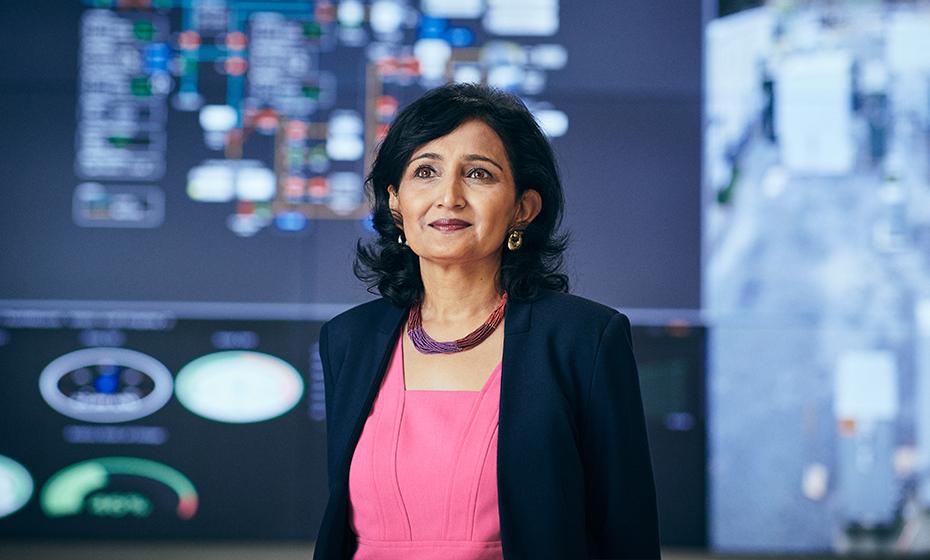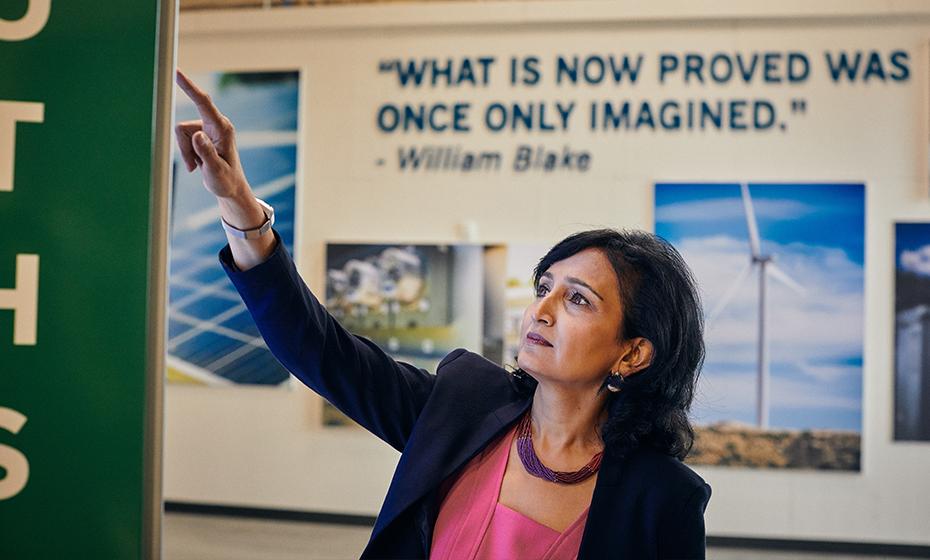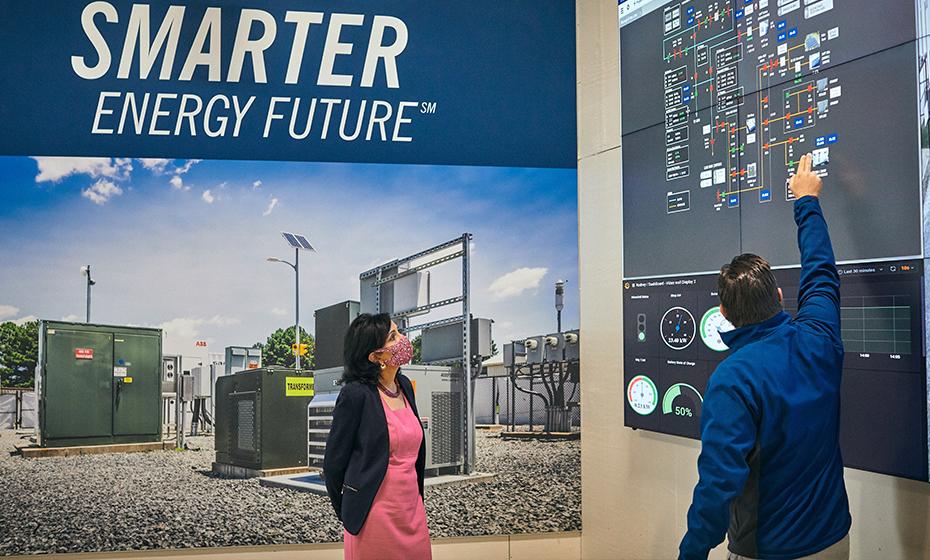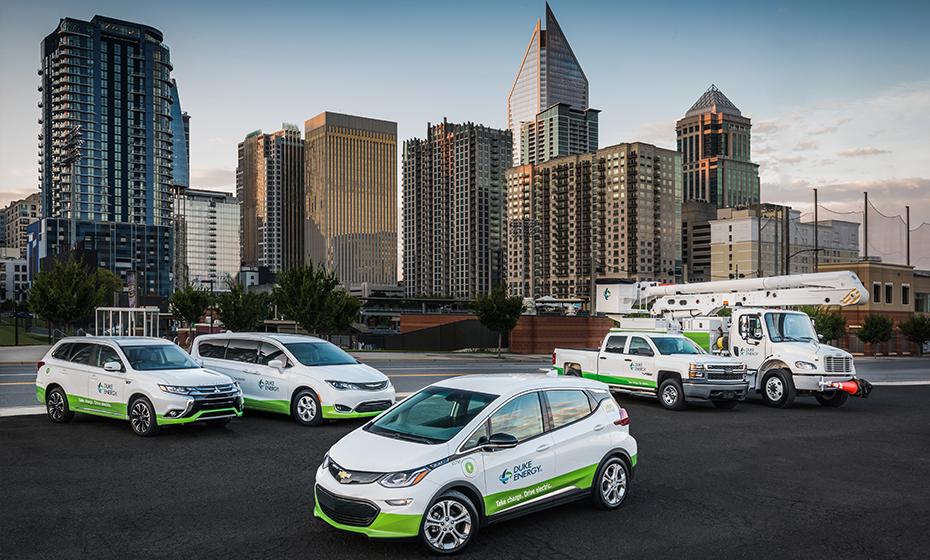Her Team Is Creating the Products, Services and Offerings Customers Want
Her Team Is Creating the Products, Services and Offerings Customers Want
How does a 100-year-old company like Duke Energy transform for the future? Senior Vice President of Customer Solutions and Strategies Swati Daji says you think big. But more importantly, you think about the customer.
Daji’s team monitors emerging technology and helps customers achieve their energy goals. Whether a customer needs to lower their energy bills, increase energy efficiency, use renewables or have more resilient service, Daji sees her team as their energy advisor and integrator of choice.
With 30 years at Duke Energy and its legacy companies, Daji has the experience to innovate in a complex, regulated industry. She’s had roles across business units from leading fuel procurement and system optimization to corporate positions like serving as chief risk officer. She’s learned how to balance the needs of customers, shareholders and other stakeholders.
“I think over the years I have thought more of possibilities rather than current realities or status quo,” she said. “Realities always come into play, but I don’t start with that because the future will surely be different.”
Instead, she thinks of what’s ideal and figures out how to make it work, which, she said, results in more creativity and transformation. In the Q&A below, Daji discusses how Duke Energy is anticipating customer needs and creating new offerings like rooftop solar and smart thermostats or using the company’s infrastructure to increase broadband access and grow electric vehicle adoption.
You came into this role in December 2018. How have you approached this role differently?
Customers’ energy needs are changing constantly – more so than in the last 50 to 100 years I would say – and technologies have enabled more things we can offer. We aim to find the sweet spot of offerings – the intersection of what’s technologically possible, what customers and stakeholders need, and what’s profitable for the company.
We have always focused on serving our customers, but as I came into this role, we were tasked with taking it a step further. Thanks to technology, we have more access to usage data and direct feedback, so we can better understand customers’ needs and create offerings they will find valuable.
This isn’t just for our residential customers, it’s for small and large business customers, too. How do we design rates that satisfy the needs of industry so our communities can prosper? How do we predict the future of things like smart cities, electric vehicles and distributed renewable generation? How can we design solutions that enable it without being uncomfortable for customers or the company?
We’re even thinking about ways we can expand with energy-adjacent services like in-home energy management, electric vehicle charging stations or broadband investments. We want to find solutions where everybody – customers, stakeholders and the company – feels like they have a win.
With change happening so rapidly, how does your team figure out what to pursue?
It’s putting yourself in the customer’s shoes and thinking, what would I want?
When you think about an iPhone, Apple predicts what I want. So, when I see it, I’m like, “Oh, this is cool!” We want to get to that level of sophistication.
I come from an analytical background, so I know science, data and models will serve us well, but when you’re thinking about the future, I think one of the biggest changes I have had in how I think is to be visionary about what’s possible. I don’t think there’s any model that could have predicted in 2005 how quickly solar generation would grow in North Carolina.
I want us to not just modify or adjust but think big and transform.
We’re seeing that some customers want to go green while others are on a fixed income, and it’s not our place to choose one over the other. If someone wants to pay to go green, well, why not serve them that way? And if someone on a fixed income needs to cut costs, we can help with energy efficiency programs. How cool is that? We don’t just think we should be selling more and more megawatts – that’s not what it’s about. For customers and companies that are integral to our communities, it’s about reducing their costs, increasing resiliency and meeting their environmental, social and governance goals.
Their goals become our goals.
Are there any new offerings that you’re most proud of?
It is like asking which child is your favorite. I am proud of all our new and existing programs as they serve our customers well.
When looking at Duke Energy’s Net Promoter Score data, Home and Energy products and services show high customer satisfaction. The Southern Alliance for Clean Energy said our energy efficiency program is the largest and the best in the Southeast, so how could we not be proud of it? Our Home Warranty customers retention is higher than industry. We are making it easier for customers to engage with us via customer mobile app and a marketplace where customers can buy products and find programs that can help them.
We are agnostic to the way we help customers. We can create value by base rate changes or supplement with other offerings like products and services. We are testing microgrids and next-generation battery storage and leaning in on enabling these new technologies. We are pursuing things like community tariffs, subscription pricing, time-of-use rates, bring-your-own-thermostat programs - all to serve our customers the way they want to be served. We want to be integrator of choice for our customer – a one-stop shop for their energy needs.
I’m excited about increasing electric vehicle ownership and charging stations. We are walking the talk by offering employee rebates to incentivize employees to drive electric and announcing our plan to convert Duke Energy’s 10,000-vehicle fleet to electric by 2030. We know range anxiety is still the most common fear, so we’re installing more charging stations in several states, which will benefit our company and our customers. Electricity is the new gasoline, so we want to find ways to enable that in the marketplace.
We continue to think of new ways to use assets we already have to benefit our customers. That curiosity fuels future initiatives like broadband connectivity. We have infrastructure – our poles and wires – that reaches every customer’s home and business, so how can we use that to increase internet access in rural areas that are underserved? This is something Duke Energy hasn’t done, but our regulators are asking us to think about it. To me, that’s a good sign if they’re asking us to think about how we can be part of the solution.
There are other companies that want to provide some of the same services like smart thermostats, electric vehicle charging and solar, but how do you think Duke Energy’s experience helps strengthen its ability to create solutions for customers?
Market trends are rapidly changing, and new competition is evolving. We have to compete to stay relevant and earn customers’ loyalty. We are in a great position with a strong portfolio of offerings, a desire to innovate and decades of energy experience to be the integrator of choice for our customers.
We have always done a good job delivering electricity reliably and affordably. As we look beyond – for energy efficiency, residential solar, smart devices, etc. – many other companies are coming in because it’s a developing market.
This is why it’s so important we provide value to our customers by giving them convenience and comfort – not complications. Building credibility and trust with the customer is going to be key so we don’t have someone else just do good marketing and take away our customers.
How has your 30 years at Duke Energy prepared you to lead the charge?
Many times, people are shocked I have been at the same company for 30 years. But I don’t think my company is the same as it was 30 years ago. I haven’t had to change because my company has changed for me. It has really prepared me and allowed me to think differently and innovate.
No one person can make things happen. I’ve been blessed with talented teammates who are my thought partners and enablers of these changes. Also, I am most proud of the company’s clean energy goals because they align with my mindset of thinking of possibilities and doing what’s right. I keep that front and center and know we exist because of our customers.






